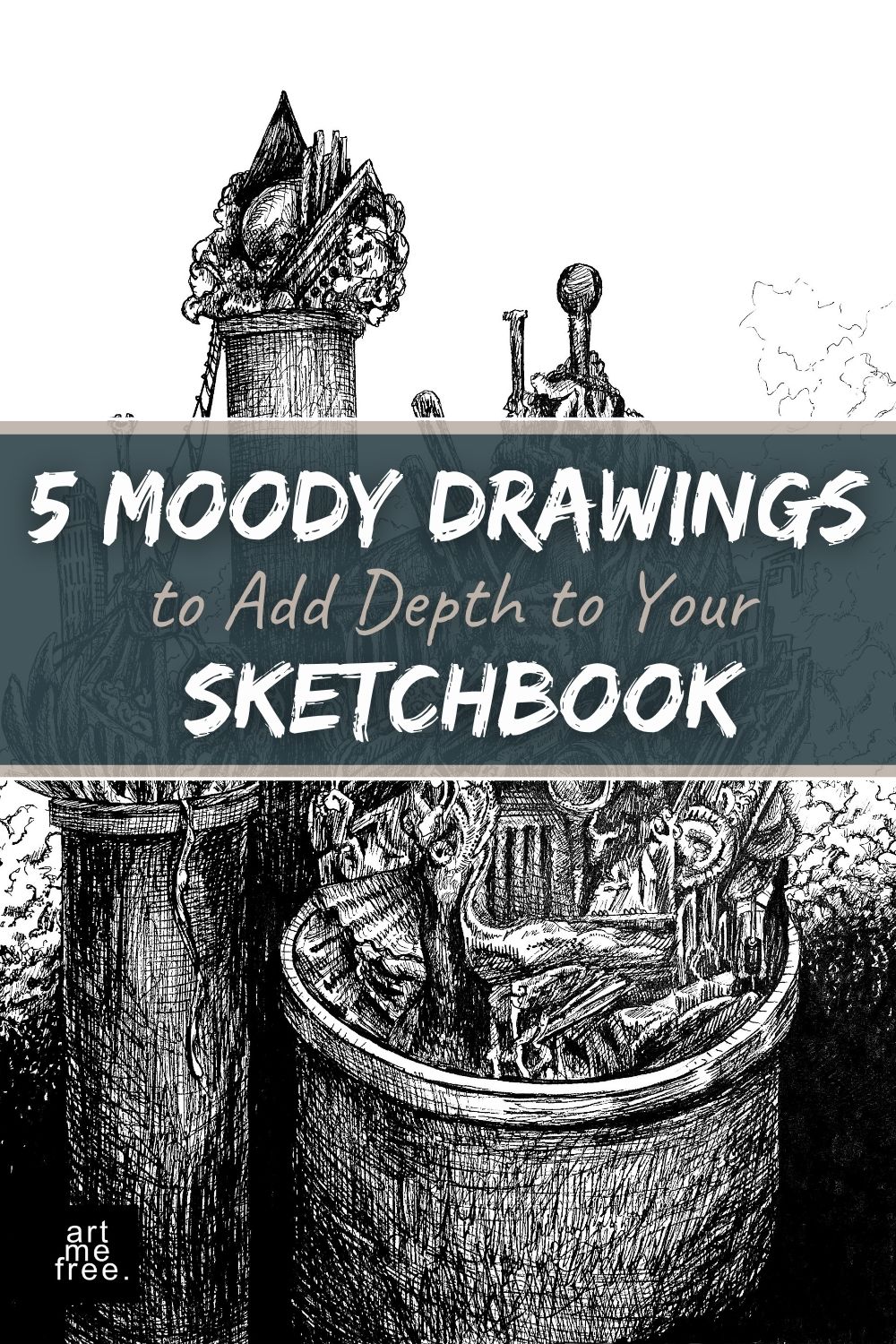
Let’s begin with a more minimal drawing. “Holy” is built from just a few architectural elements, but the dark shadows and irregular forms tell a bigger story. The structure feels forgotten or even sacred, like something ancient that has quietly eroded over time.
Rather than focusing on lots of fine details, this piece makes the most of contrast—the stark difference between dark, textured areas and blank space.
Try this in your sketchbook:
Use bold shading in just one area, and let the rest breathe.
Think of ruins or old buildings as inspiration.
Focus on mood, not perfection—let things look uneven or worn.
Use hatching and stippling for quiet, textured shadows.
Starting with something like this helps ease into moody drawings without overcomplicating your sketch.
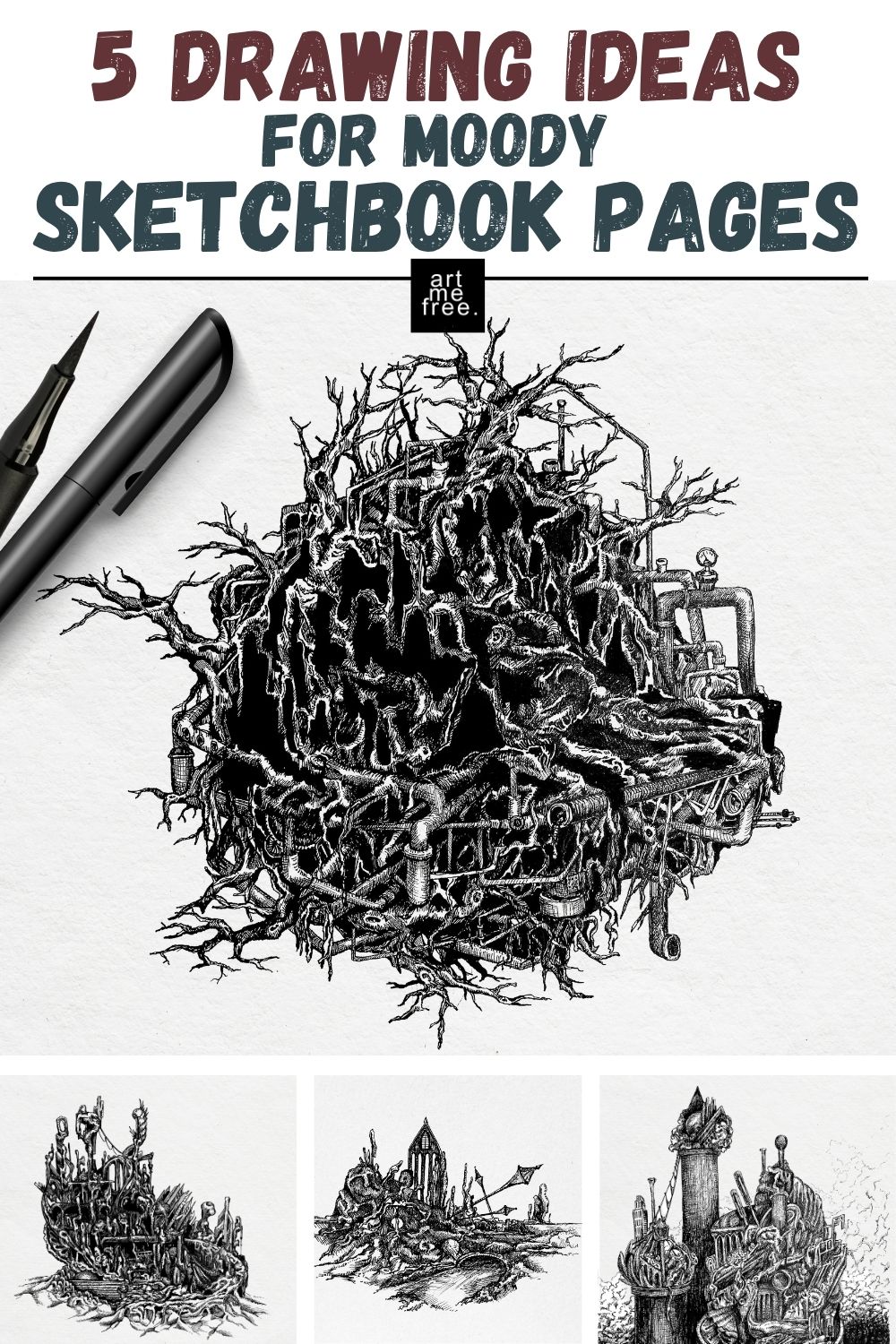
This drawing is all about the feeling of stillness. In “Roots,” the forms look like tree branches and roots, but they’re entirely bare—no leaves, no signs of life. They’re tangled around industrial pipes and tubes, creating a contrast that feels a bit lifeless and frozen in time.
Rather than illustrating a scene, it feels more like a quiet moment captured just after everything has stopped moving.
Use these techniques:
Draw leafless trees or dry root systems—nothing too full or lush.
Weave in mechanical objects like wires, screws, or valves.
Keep the textures rough and uneven.
Avoid symmetry; let the forms build naturally.
This balance between nature and structure gives your moody drawing a deeper emotional undertone.
“Stranded” feels like a memory you can’t quite place. At first glance, it looks abstract—but then you begin to notice familiar forms. The drawing was inspired by shapes like windows and fences, but everything is distorted and layered in strange ways.
It reminds me of a ship stranded on dry sand. There’s stillness in the scene, but it also suggests there was once movement, once life.
To try something like this:
Begin with abstract forms—don’t try to make things recognizable at first.
Later, hint at real-world objects: windows, rails, rooftops.
Let the sketch build slowly, layer by layer.
Don’t explain everything—let mystery stay.
This type of moody drawing creates emotion through suggestion, not clarity.
This is where complexity and mood come together. “Island” is a dense structure filled with mechanical parts—but it’s also entangled with strange organic growth. Some areas look like slime or bubbling foam. Others are sharp and metallic. The sea below feels wild and powerful, and a mysterious kraken-like creature adds a final layer of intrigue.
The image is both industrial and alive—beautiful and unsettling.
Try this style by:
Mixing hard shapes (pipes, buildings) with loose, flowing textures.
Adding odd details: bubbles, coils, slime-like textures.
Placing your scene near water or mist for extra atmosphere.
Letting a small creature or shape appear unexpectedly.
This kind of moody drawing thrives on complexity and contrast. It’s where mystery becomes the main subject.
In “Pipes,” everything feels heavy. The drawing is stacked with detailed objects—pipes, buildings, containers—and it all seems ready to spill over. Meanwhile, dark smoke in the background softens the sharp edges, creating a haze of quiet tension.
This is a great example of how clutter and density can add mood.
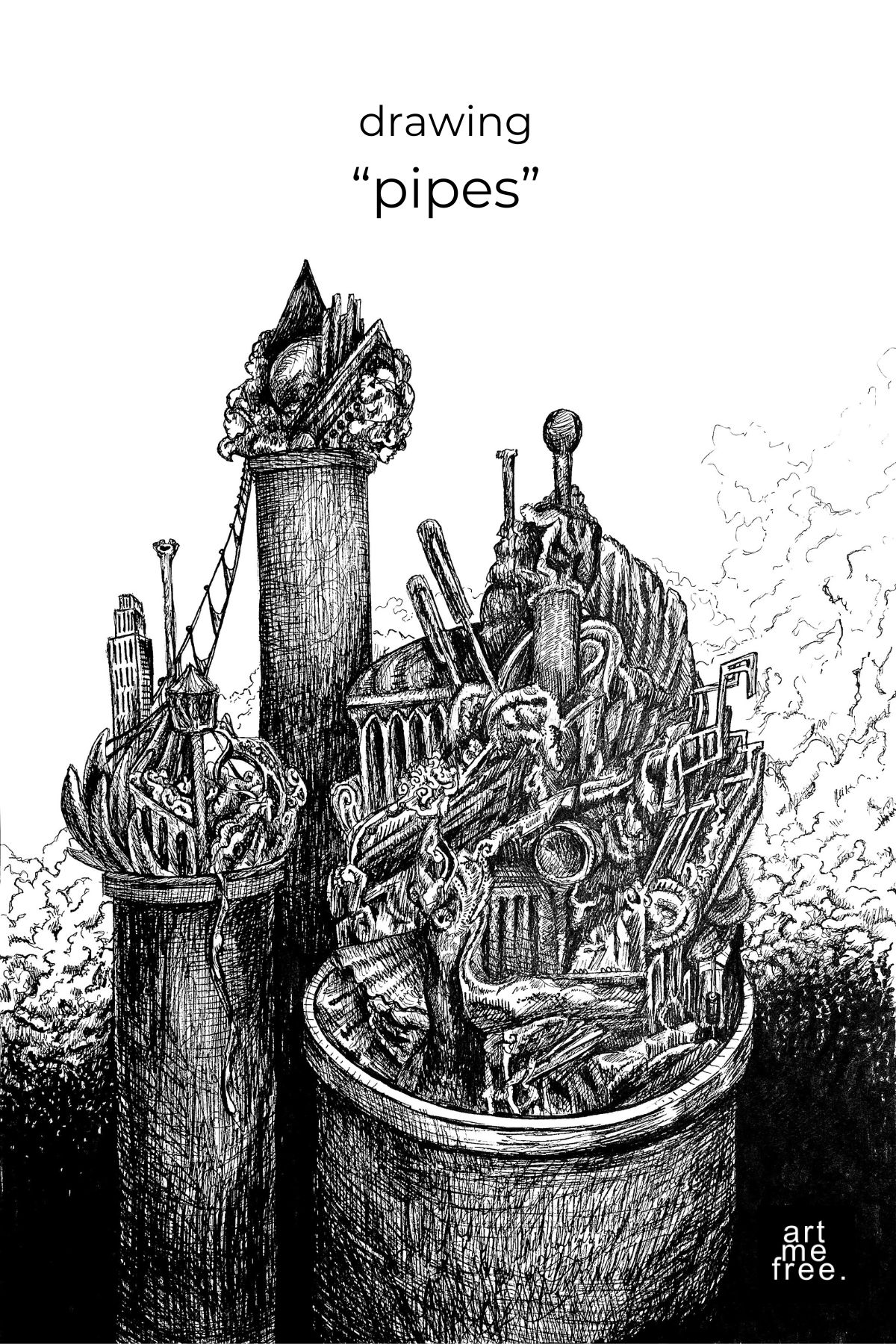
Experiment with this approach:
Fill the space with lots of vertical elements—no need to leave much white space.
Mix up the line work: fine for details, bold for outlines.
Add soft smoke or shadows to calm down the noise.
Use repetition—lots of pipes, gears, or repeating patterns.
Drawings like this reflect emotional weight or mental overload. They’re a visual way to process complexity.
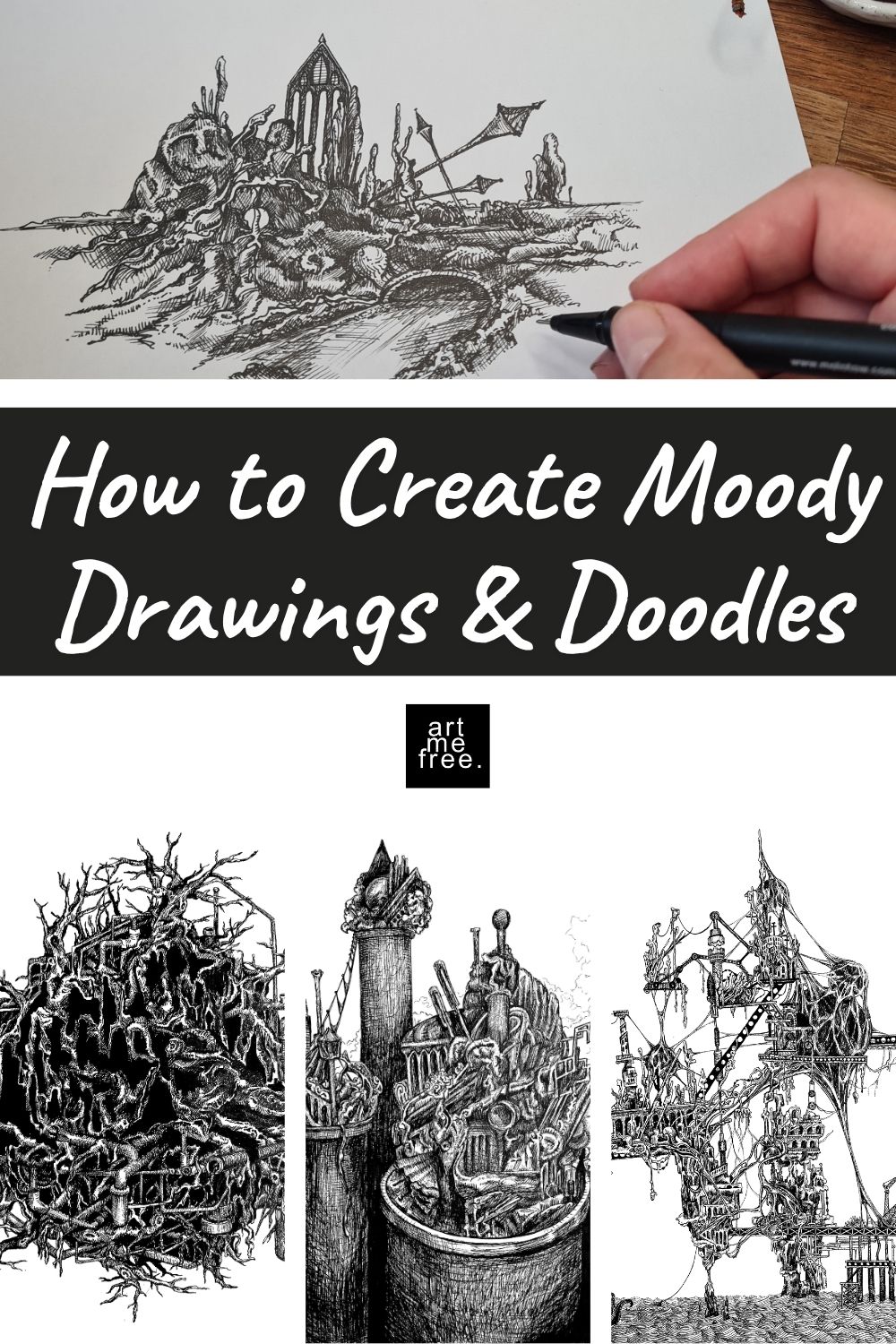
Adding mood to your sketchbook doesn’t mean everything has to be dark or dramatic. Sometimes, it’s about stillness, or quiet decay, or small emotional details that make the drawing feel real. You don’t need color or fancy tools—just a pen, paper, and a willingness to let your ideas flow naturally.
All of the examples in this post are original works from artmefree, drawn with black pen and an open mind. If you’re inspired by this unique visual language, you can explore more pieces or shop affordable prints in the artmefree store. These drawings look beautiful on your wall—and even better in a cozy fall setup.
Want to revisit these sketchbook ideas later? Pin this post for ongoing moody drawing inspiration.
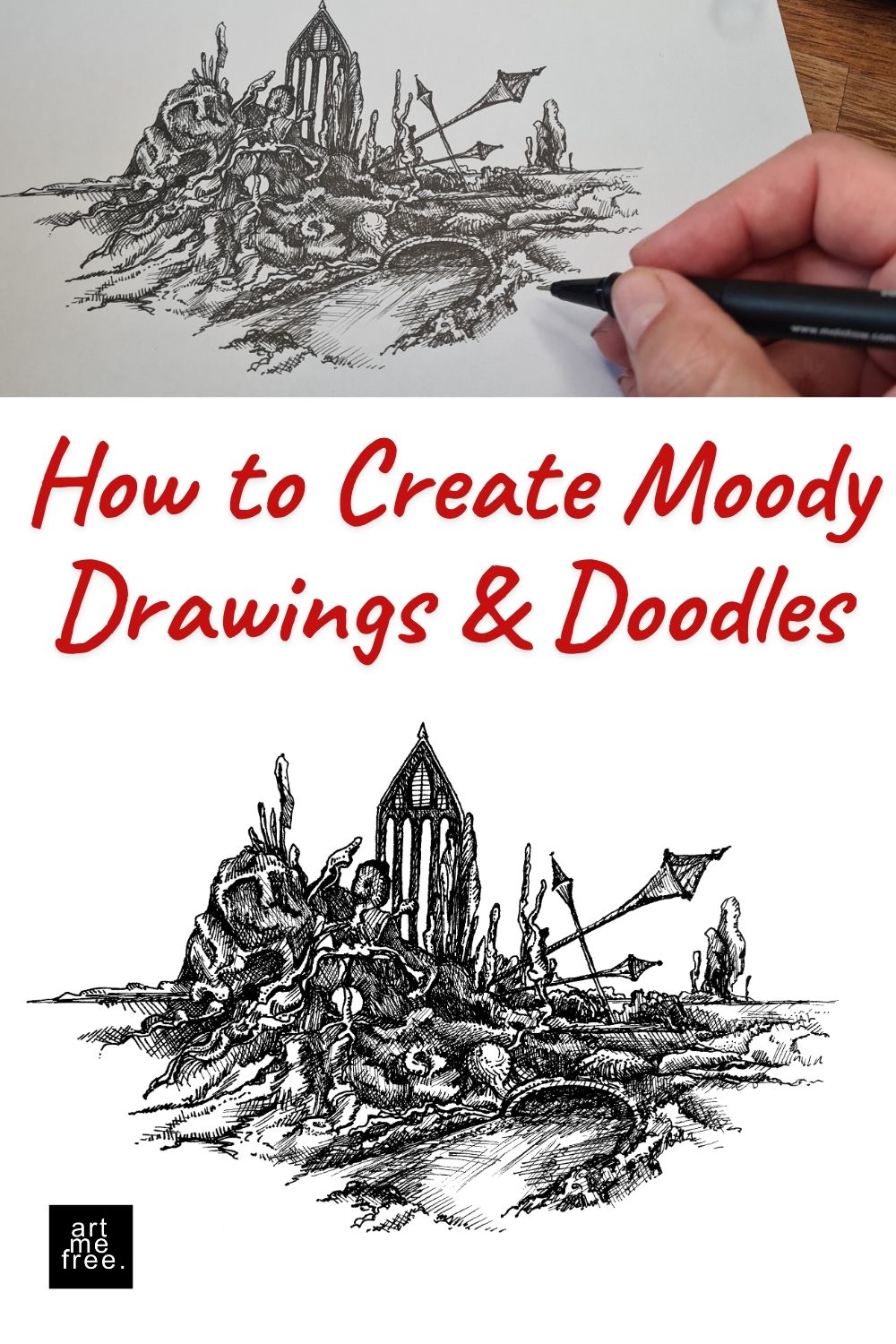
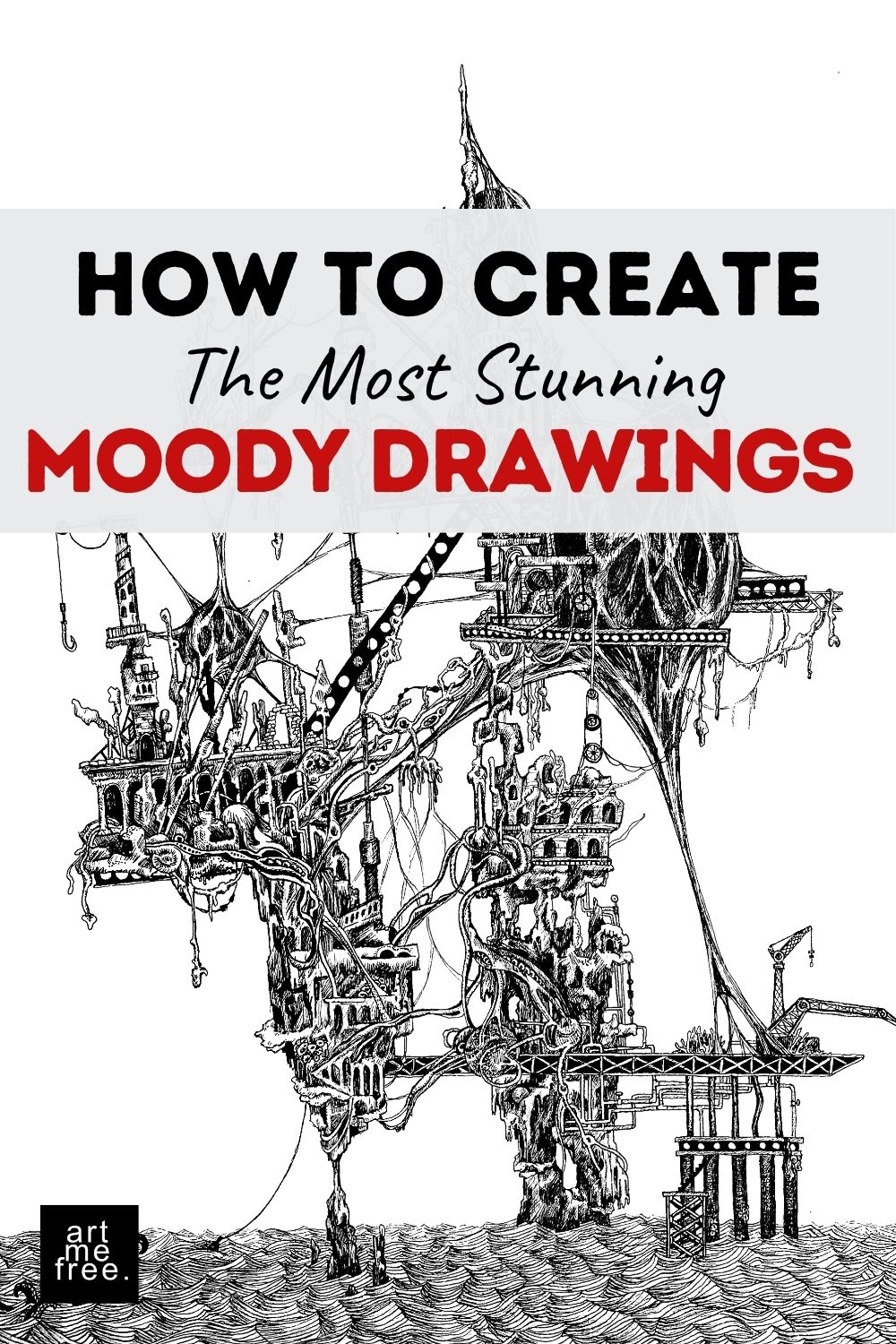
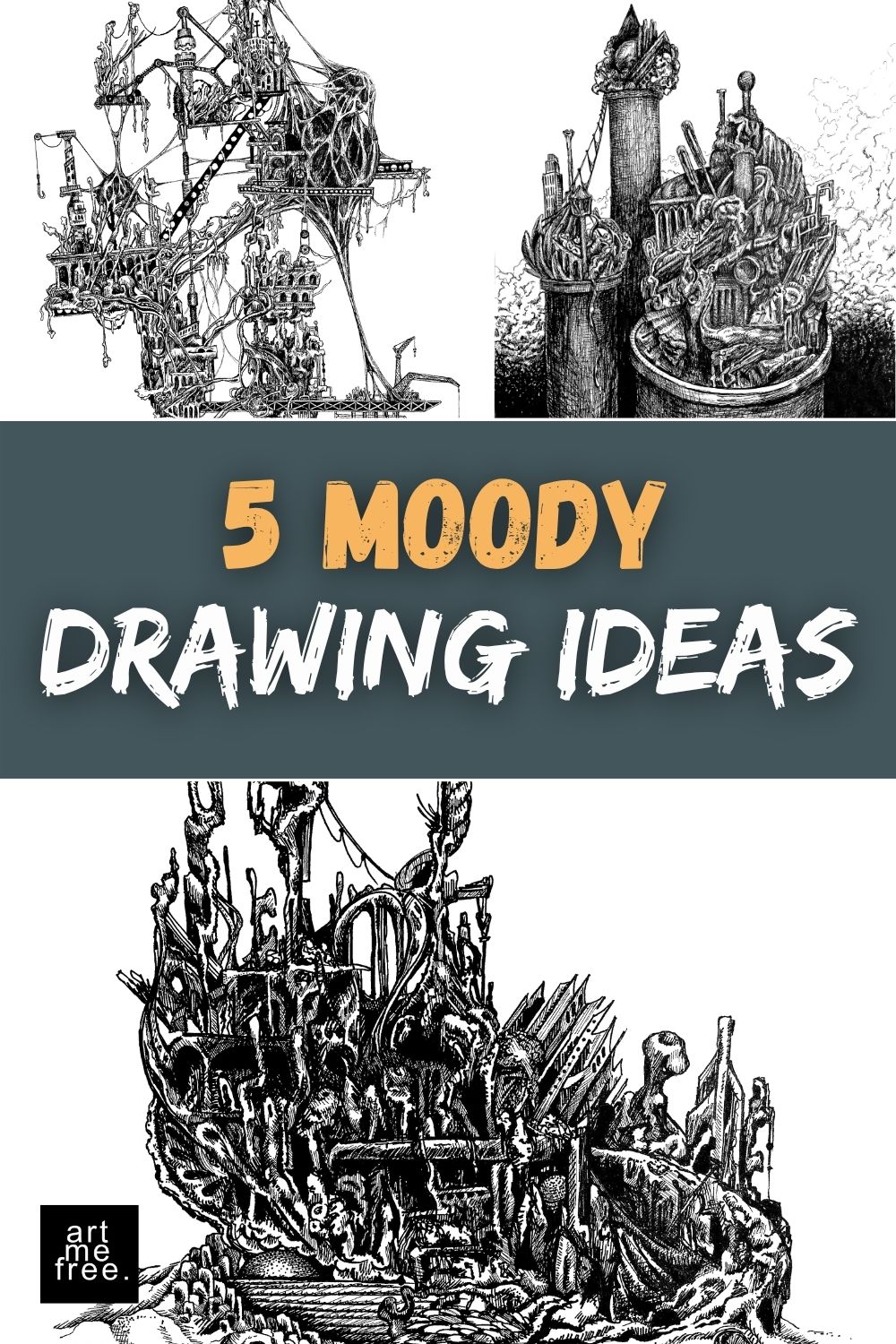
To provide you with an optimal experience, we use technologies such as cookies to store and/or access device information. If you consent to these technologies, we may process data such as browsing behavior or unique IDs on this website. If you do not give or withdraw your consent, certain features and functions may be impaired.